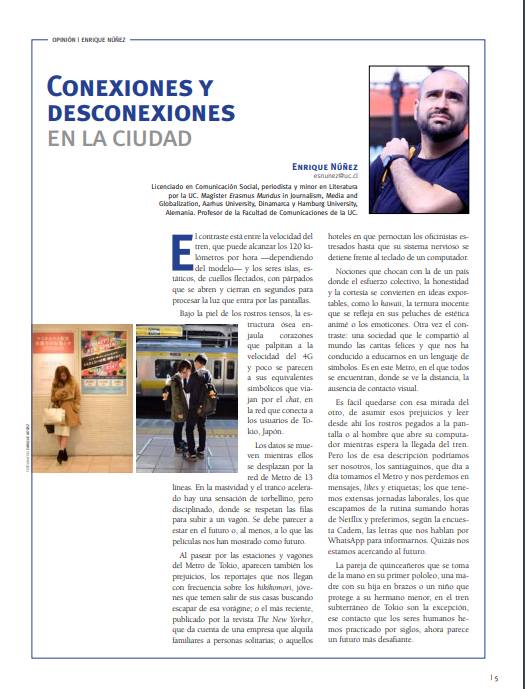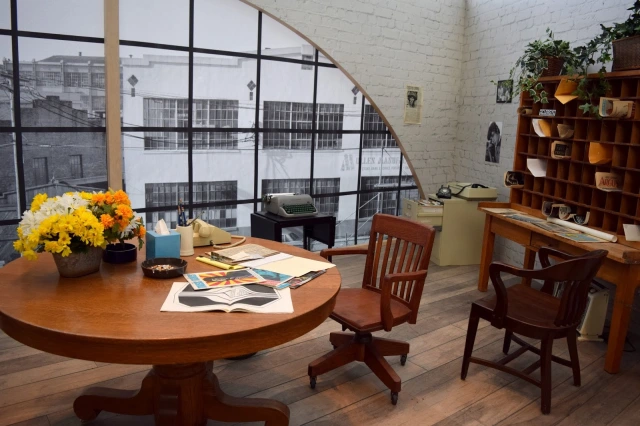Columna y fotografías publicada en la Revista Diálogos de la Universidad Católica en la edición de Diciembre 2018. Link a la revista completa.
Las fotos se pueden ver en mi cuenta de Instagram.

Conexiones y desconexiones en la ciudad
El contraste está entre la velocidad del tren, que puede alcanzar los 120 kilómetros por hora —dependiendo del modelo— y los seres islas, estáticos, de cuellos flectados, con párpados que se abren y cierran en segundos para procesar la luz que entra por las pantallas.
Bajo la piel de los rostros tensos, la estructura ósea enjaula corazones que palpitan a la velocidad del 4G y poco se parecen a sus equivalentes simbólicos que viajan por el chat, en la red que conecta a los usuarios de Tokio, Japón.
Los datos se mueven mientras ellos se desplazan por la red de Metro de 13 líneas. En la masividad y el tranco acelerado hay una sensación de torbellino, pero disciplinado, donde se respetan las filas para subir a un vagón. Se debe parecer a estar en el futuro o, al menos, a lo que las películas nos han mostrado como futuro.
Al pasear por las estaciones y vagones del Metro de Tokio, aparecen también los prejuicios, los reportajes que nos llegan con frecuencia sobre los hikikomori, jóvenes que temen salir de sus casas buscando escapar de esa vorágine; o el más reciente,publicado por la revista The New Yorker, que da cuenta de una empresa que alquila familiares a personas solitarias; o aquellos hoteles en que pernoctan los oficinistas estresados hasta que su sistema nervioso se detiene frente al teclado de un computador.
Nociones que chocan con la de un país donde el esfuerzo colectivo, la honestidad y la cortesía se convierten en ideas exportables, como lo kawaii, la ternura inocente que se refleja en sus peluches de estética animé o los emoticones. Otra vez el contraste: una sociedad que le compartió al mundo las caritas felices y que nos ha conducido a educarnos en un lenguaje de símbolos. Es en este Metro, en el que todos se encuentran, donde se ve la distancia, la ausencia de contacto visual.
Es fácil quedarse con esa mirada del otro, de asumir esos prejuicios y leer desde ahí los rostros pegados a la pantalla o al hombre que abre su computador mientras espera la llegada del tren.
Pero los de esa descripción podríamos ser nosotros, los santiaguinos, que día a día tomamos el Metro y nos perdemos en mensajes, likes y etiquetas; los que tenemos extensas jornadas laborales, los que escapamos de la rutina sumando horas de Netflix y preferimos, según la encuesta Cadem, las letras que nos hablan por WhatsApp para informarnos. Quizás nos estamos acercando al futuro.
La pareja de quinceañeros que se toma de la mano en su primer pololeo, una madre con su hija en brazos o un niño que protege a su hermano menor, en el tren subterráneo de Tokio son la excepción, ese contacto que los seres humanos hemos practicado por siglos, ahora parece un futuro más desafiante.








